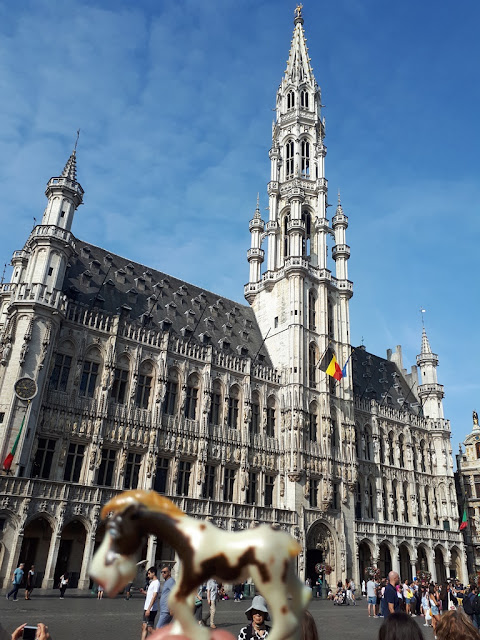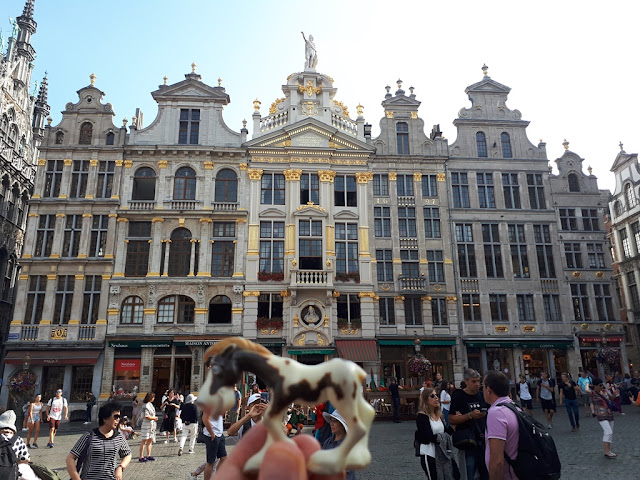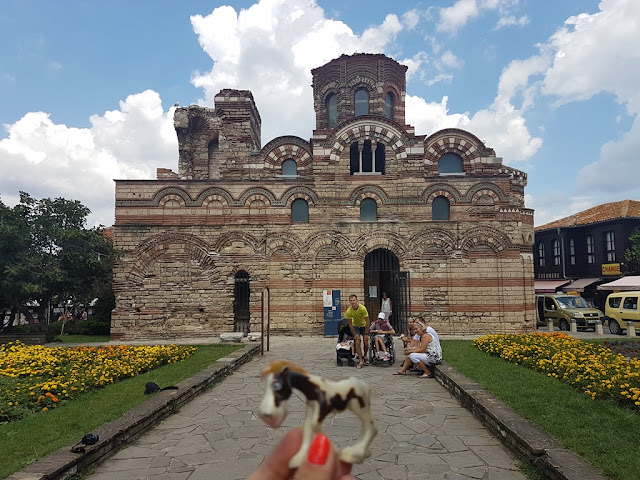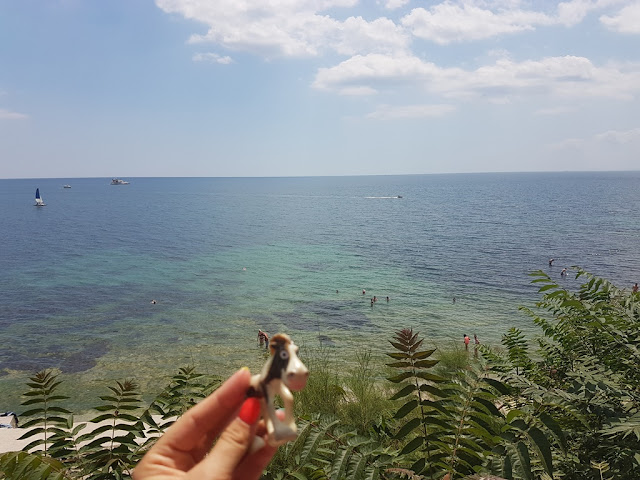Brussels is the seat of the central institutions of the European Union, so you could almost say that it is Europe's capital city. Inside this interesting city, as in many others, there is a central place. But this one is very unique. Ladies, gentlemen, horses - welcome to Grand Place! Although it is called Grand, it is not due to the size. The square measures just 68 by 110 metres (223 by 361ft) so it is 5 imes smaller from Krakow Market Square, but I have never seen such so many beautifully ornamented buidlings in one place.
As you can see it looks amazing in any weather.

The square was originally set up as Lower Market in the end of the 11th century, on a dried-up marsh near the fort that was surrounded by sandbanks.
The square was rebuilt in the following four years by the city's guilds. Their efforts were regulated by the city councillors and the Governor of Brussels, who required that their plans be submitted to the authorities for their approval. This helped to deliver a remarkably harmonious layout for the rebuilt Grand Place, despite the ostensibly clashing combination of Gothic, Baroque and Louis XIV styles.
In the late 18th century, Brabant Revolutionaries sacked the Grand Place, destroying statues of nobility and symbols of Christianity. The buildings were neglected and left in poor condition, with their facades painted, stuccoed and damaged by pollution. By the late 19th century, a sensitivity arose about the heritage value of the buildings – the turning point was the demolition of L'Étoile guild house in 1852. Under the impulse of mayor Charles Buls, the Brussels' authorities had the Grand Place returned to its former splendour, with buildings being reconstructed or restored.
Let's go around the square. Each of the houses has its name. Let's meet, from left to right: Le Mont Thabor, La Rose, L'Arbre d'or, Le Cygne and L'Étoile, where you can find the passage for a horse-drawn tramway. Good to know something was done here especially for us, horses.
The Town Hall is the central edifice on the Grand Place. It was built between 1402 and 1455 and it is the square's only remaining medieval building. The Gothic tower is 96 m (315 ft) heigh. At its summit stands a 5 m (16 ft) tall statue of Saint Michael, the patron saint of Brussels, slaying a demon.
Going further clockwise we have Le Renard, Le Cornet, La Louve, Le Sac, La Brouette and at the end Le Roy d'Espagne, decorated with bust of Charles II of Spain, last Habsburg ruler of Spanish Empire. Please remember that from 1506 to 1713 Brussels and whole Southern (Catholic) Netherlands were part of the Spanish Empire.
Below we have the north-eastern fasade, with very impressive house that used to have the different names: Bread House (by 15th century), Duke's House (when it was the seat of Duke of Brabant) and King's House later.
Here you can admire it in its full beauty.
Let me introduce you to: Le Marchand d'or, Le Pigeon, La Chaloupe d'or, L'Ange, Joseph et Anne, Le Cerf. The last one houses fantastic shop of Godiva. You should try it!
And the last one: House of the Dukes of Brabant, in fact joining seven houses into one common facade.
The Grand Place was named by UNESCO as a World Heritage Site in 1998.
Let's see what is behind the facades.
It is also beautiful and impressive.
Next week I will show you other interesting parts of the capital of the EU.








































